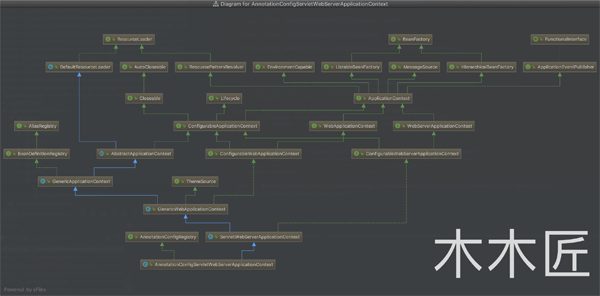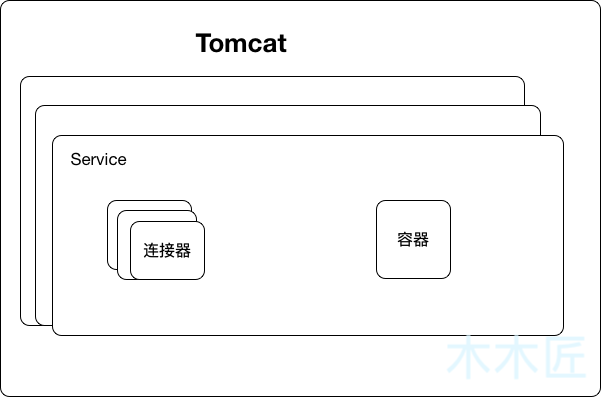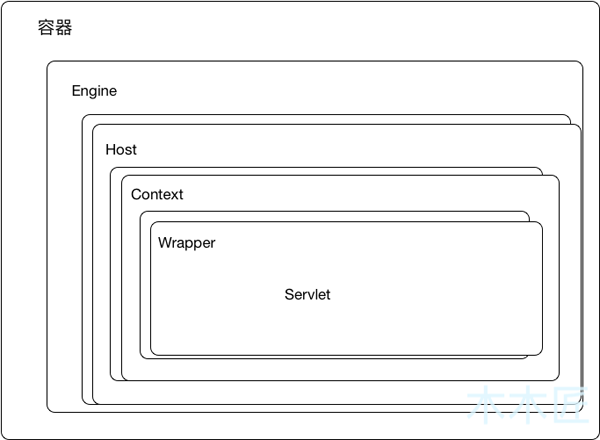这篇文章给大家介绍Tomcat中怎么启动SpringBoot,内容非常详细,感兴趣的小伙伴们可以参考借鉴,希望对大家能有所帮助。从 Main 方法说起用过springBoot的人都知道,首先要写一个main方法来启动@SpringBootA
这篇文章给大家介绍Tomcat中怎么启动SpringBoot,内容非常详细,感兴趣的小伙伴们可以参考借鉴,希望对大家能有所帮助。
从 Main 方法说起
用过springBoot的人都知道,首先要写一个main方法来启动
@SpringBootApplication public class TomcatdebugApplication { public static void main(String[] args) { SpringApplication.run(TomcatdebugApplication.class, args); } }我们直接点击run方法的源码,跟踪下来,发下最终 的run方法是调用ConfigurableApplicationContext方法,源码如下:
public ConfigurableApplicationContext run(String... args) { StopWatch stopWatch = new StopWatch(); stopWatch.start(); ConfigurableApplicationContext context = null; Collection<springbootexceptionreporter> exceptionReporters = new ArrayList<>(); //设置系统属性『java.awt.headless』,为true则启用headless模式支持 configureHeadlessProperty(); //通过*SpringFactoriesLoader*检索*META-INF/spring.factories*, //找到声明的所有SpringApplicationRunListener的实现类并将其实例化, //之后逐个调用其started()方法,广播SpringBoot要开始执行了 SpringApplicationRunListeners listeners = getRunListeners(args); //发布应用开始启动事件 listeners.starting(); try { //初始化参数 ApplicationArguments applicationArguments = new DefaultApplicationArguments(args); //创建并配置当前SpringBoot应用将要使用的Environment(包括配置要使用的PropertySource以及Profile), //并遍历调用所有的SpringApplicationRunListener的environmentPrepared()方法,广播Environment准备完毕。 ConfigurableEnvironment environment = prepareEnvironment(listeners, applicationArguments); configureIgnoreBeanInfo(environment); //打印banner Banner printedBanner = printBanner(environment); //创建应用上下文 context = createApplicationContext(); //通过*SpringFactoriesLoader*检索*META-INF/spring.factories*,获取并实例化异常分析器 exceptionReporters = getSpringFactoriesInstances(SpringBootExceptionReporter.class, new Class[] { ConfigurableApplicationContext.class }, context); //为ApplicationContext加载environment,之后逐个执行ApplicationContextInitializer的initialize()方法来进一步封装ApplicationContext, //并调用所有的SpringApplicationRunListener的contextPrepared()方法,【EventPublishingRunListener只提供了一个空的contextPrepared()方法】, //之后初始化ioc容器,并调用SpringApplicationRunListener的contextLoaded()方法,广播ApplicationContext的IoC加载完成, //这里就包括通过**@EnableAutoConfiguration**导入的各种自动配置类。 prepareContext(context, environment, listeners, applicationArguments, printedBanner); //刷新上下文 refreshContext(context); //再一次刷新上下文,其实是空方法,可能是为了后续扩展。 afterRefresh(context, applicationArguments); stopWatch.stop(); if (this.logStartupInfo) { new StartupInfoLogger(this.mainApplicationClass).logStarted(getApplicationLog(), stopWatch); } //发布应用已经启动的事件 listeners.started(context); //遍历所有注册的ApplicationRunner和CommandLineRunner,并执行其run()方法。 //我们可以实现自己的ApplicationRunner或者CommandLineRunner,来对SpringBoot的启动过程进行扩展。 callRunners(context, applicationArguments); } catch (Throwable ex) { handleRunFailure(context, ex, exceptionReporters, listeners); throw new IllegalStateException(ex); } try { //应用已经启动完成的监听事件 listeners.running(context); } catch (Throwable ex) { handleRunFailure(context, ex, exceptionReporters, null); throw new IllegalStateException(ex); } return context; }其实这个方法我们可以简单的总结下步骤为 > 1. 配置属性 > 2. 获取监听器,发布应用开始启动事件 > 3. 初始化输入参数 > 4. 配置环境,输出banner > 5. 创建上下文 > 6. 预处理上下文 > 7. 刷新上下文 > 8. 再刷新上下文 > 9. 发布应用已经启动事件 > 10. 发布应用启动完成事件
其实上面这段代码,如果只要分析tomcat内容的话,只需要关注两个内容即可,上下文是如何创建的,上下文是如何刷新的,分别对应的方法就是createApplicationContext() 和refreshContext(context),接下来我们来看看这两个方法做了什么。
protected ConfigurableApplicationContext createApplicationContext() { Class<!--?--> contextClass = this.applicationContextClass; if (contextClass == null) { try { switch (this.WEBApplicationType) { case SERVLET: contextClass = Class.forName(DEFAULT_SERVLET_WEB_CONTEXT_CLASS); break; case ReactIVE: contextClass = Class.forName(DEFAULT_REACTIVE_WEB_CONTEXT_CLASS); break; default: contextClass = Class.forName(DEFAULT_CONTEXT_CLASS); } } catch (ClassNotFoundException ex) { throw new IllegalStateException( "Unable create a default ApplicationContext, " + "please specify an ApplicationContextClass", ex); } } return (ConfigurableApplicationContext) BeanUtils.instantiateClass(contextClass); }这里就是根据我们的webApplicationType 来判断创建哪种类型的Servlet,代码中分别对应着Web类型(SERVLET),响应式Web类型(REACTIVE),非Web类型(default),我们建立的是Web类型,所以肯定实例化 DEFAULT_SERVLET_WEB_CONTEXT_CLASS指定的类,也就是AnnotationConfigServletWebServerApplicationContext类,我们来用图来说明下这个类的关系

通过这个类图我们可以知道,这个类继承的是ServletWebServerApplicationContext,这就是我们真正的主角,而这个类最终是继承了AbstractApplicationContext,了解完创建上下文的情况后,我们再来看看刷新上下文,相关代码如下:
//类:SpringApplication.java private void refreshContext(ConfigurableApplicationContext context) { //直接调用刷新方法 refresh(context); if (this.reGISterShutdownHook) { try { context.registerShutdownHook(); } catch (AccessControlException ex) { // Not allowed in some environments. } } } //类:SpringApplication.java protected void refresh(ApplicationContext applicationContext) { Assert.isInstanceOf(AbstractApplicationContext.class, applicationContext); ((AbstractApplicationContext) applicationContext).refresh(); }这里还是直接传递调用本类的refresh(context)方法,最后是强转成父类AbstractApplicationContext调用其refresh()方法,该代码如下:
// 类:AbstractApplicationContext public void refresh() throws BeansException, IllegalStateException { synchronized (this.startupShutdownMonitor) { // Prepare this context for refreshing. prepareRefresh(); // Tell the subclass to refresh the internal bean factory. ConfigurableListableBeanFactory beanFactory = obtainFreshBeanFactory(); // Prepare the bean factory for use in this context. prepareBeanFactory(beanFactory); try { // Allows post-processing of the bean factory in context subclasses. postProcessBeanFactory(beanFactory); // Invoke factory processors registered as beans in the context. invokeBeanFactoryPostProcessors(beanFactory); // Register bean processors that intercept bean creation. registerBeanPostProcessors(beanFactory); // Initialize message source for this context. initMessageSource(); // Initialize event multicaster for this context. initApplicationEventMulticaster(); // Initialize other special beans in specific context subclasses.这里的意思就是调用各个子类的onRefresh() onRefresh(); // Check for listener beans and register them. registerListeners(); // Instantiate all remaining (non-lazy-init) singletons. finishBeanFactoryInitialization(beanFactory); // Last step: publish corresponding event. finishRefresh(); } catch (BeansException ex) { if (logger.isWarnEnabled()) { logger.warn("Exception encountered during context initialization - " + "cancelling refresh attempt: " + ex); } // Destroy already created singletons to avoid dangling resources. destroyBeans(); // Reset 'active' flag. cancelRefresh(ex); // Propagate exception to caller. throw ex; } finally { // Reset common introspection caches in Spring's core, since we // might not ever need metadata for singleton beans anymore... resetCommonCaches(); } } }这里我们看到onRefresh()方法是调用其子类的实现,根据我们上文的分析,我们这里的子类是ServletWebServerApplicationContext。
//类:ServletWebServerApplicationContext protected void onRefresh() { super.onRefresh(); try { createWebServer(); } catch (Throwable ex) { throw new ApplicationContextException("Unable to start web server", ex); } } private void createWebServer() { WebServer webServer = this.webServer; ServletContext servletContext = getServletContext(); if (webServer == null && servletContext == null) { ServletWebServerFactory factory = getWebServerFactory(); this.webServer = factory.getWebServer(getSelfInitializer()); } else if (servletContext != null) { try { getSelfInitializer().onStartup(servletContext); } catch (ServletException ex) { throw new ApplicationContextException("Cannot initialize servlet context", ex); } } initPropertySources(); }到这里,其实庐山真面目已经出来了,createWebServer()就是启动web服务,但是还没有真正启动Tomcat,既然webServer是通过ServletWebServerFactory来获取的,我们就来看看这个工厂的真面目。

走进Tomcat内部
根据上图我们发现,工厂类是一个接口,各个具体服务的实现是由各个子类来实现的,所以我们就去看看TomcatServletWebServerFactory.getWebServer()的实现。
@Override public WebServer getWebServer(ServletContextInitializer... initializers) { Tomcat tomcat = new Tomcat(); File baseDir = (this.baseDirectory != null) ? this.baseDirectory : createTempDir("tomcat"); tomcat.setBaseDir(baseDir.getAbsolutePath()); Connector connector = new Connector(this.protocol); tomcat.getService().addConnector(connector); customizeConnector(connector); tomcat.setConnector(connector); tomcat.getHost().setAutoDeploy(false); configureEngine(tomcat.getEngine()); for (Connector additionalConnector : this.additionalTomcatConnectors) { tomcat.getService().addConnector(additionalConnector); } prepareContext(tomcat.getHost(), initializers); return getTomcatWebServer(tomcat); }根据上面的代码,我们发现其主要做了两件事情,第一件事就是把Connnctor(我们称之为连接器)对象添加到Tomcat中,第二件事就是configureEngine,这连接器我们勉强能理解(不理解后面会述说),那这个Engine是什么呢?我们查看tomcat.getEngine()的源码:
public Engine getEngine() { Service service = getServer().findServices()[0]; if (service.getContainer() != null) { return service.getContainer(); } Engine engine = new StandardEngine(); engine.setName( "Tomcat" ); engine.setDefaultHost(hostname); engine.setRealm(createDefaultRealm()); service.setContainer(engine); return engine; }根据上面的源码,我们发现,原来这个Engine是容器,我们继续跟踪源码,找到Container接口

上图中,我们看到了4个子接口,分别是Engine,Host,Context,Wrapper。我们从继承关系上可以知道他们都是容器,那么他们到底有啥区别呢?我看看他们的注释是怎么说的。
public interface Engine extends Container { //省略代码 } public interface Host extends Container { //省略代码 } public interface Context extends Container, ContextBind { //省略代码 } public interface Wrapper extends Container { //省略代码 }上面的注释翻译过来就是,Engine是最高级别的容器,其子容器是Host,Host的子容器是Context,Wrapper是Context的子容器,所以这4个容器的关系就是父子关系,也就是Engine>Host>Context>Wrapper。 我们再看看Tomcat类的源码:
//部分源码,其余部分省略。 public class Tomcat { //设置连接器 public void setConnector(Connector connector) { Service service = getService(); boolean found = false; for (Connector serviceConnector : service.findConnectors()) { if (connector == serviceConnector) { found = true; } } if (!found) { service.addConnector(connector); } } //获取service public Service getService() { return getServer().findServices()[0]; } //设置Host容器 public void setHost(Host host) { Engine engine = getEngine(); boolean found = false; for (Container engineHost : engine.findChildren()) { if (engineHost == host) { found = true; } } if (!found) { engine.addChild(host); } } //获取Engine容器 public Engine getEngine() { Service service = getServer().findServices()[0]; if (service.getContainer() != null) { return service.getContainer(); } Engine engine = new StandardEngine(); engine.setName( "Tomcat" ); engine.setDefaultHost(hostname); engine.setRealm(createDefaultRealm()); service.setContainer(engine); return engine; } //获取server public Server getServer() { if (server != null) { return server; } System.setProperty("catalina.useNaming", "false"); server = new StandardServer(); initBaseDir(); // Set configuration source ConfigFileLoader.setSource(new CatalinaBaseConfigurationSource(new File(basedir), null)); server.setPort( -1 ); Service service = new StandardService(); service.setName("Tomcat"); server.addService(service); return server; } //添加Context容器 public Context addContext(Host host, String contextPath, String contextName, String dir) { silence(host, contextName); Context ctx = createContext(host, contextPath); ctx.setName(contextName); ctx.setPath(contextPath); ctx.setDocBase(dir); ctx.addLifecycleListener(new FixContextListener()); if (host == null) { getHost().addChild(ctx); } else { host.addChild(ctx); } //添加Wrapper容器 public static Wrapper addServlet(Context ctx, String servletName, Servlet servlet) { // will do class for name and set init params Wrapper sw = new ExistingStandardWrapper(servlet); sw.setName(servletName); ctx.addChild(sw); return sw; } }阅读Tomcat的getServer()我们可以知道,Tomcat的最顶层是Server,Server就是Tomcat的实例,一个Tomcat一个Server;通过getEngine()我们可以了解到Server下面是Service,而且是多个,一个Service代表我们部署的一个应用,而且我们还可以知道,Engine容器,一个service只有一个;根据父子关系,我们看setHost()源码可以知道,host容器有多个;同理,我们发现addContext()源码下,Context也是多个;addServlet()表明Wrapper容器也是多个,而且这段代码也暗示了,其实Wrapper和Servlet是一层意思。另外我们根据setConnector源码可以知道,连接器(Connector)是设置在service下的,而且是可以设置多个连接器(Connector)。
根据上面分析,我们可以小结下: Tomcat主要包含了2个核心组件,连接器(Connector)和容器(Container),用图表示如下:

一个Tomcat是一个Server,一个Server下有多个service,也就是我们部署的多个应用,一个应用下有多个连接器(Connector)和一个容器(Container),容器下有多个子容器,关系用图表示如下:

关于Tomcat中怎么启动SpringBoot就分享到这里了,希望以上内容可以对大家有一定的帮助,可以学到更多知识。如果觉得文章不错,可以把它分享出去让更多的人看到。
--结束END--
本文标题: Tomcat中怎么启动SpringBoot
本文链接: https://www.lsjlt.com/news/285010.html(转载时请注明来源链接)
有问题或投稿请发送至: 邮箱/279061341@qq.com QQ/279061341
下载Word文档到电脑,方便收藏和打印~
2024-05-16
2024-05-16
2024-05-16
2024-05-16
2024-05-16
2024-05-16
2024-05-16
2024-05-16
2024-05-16
2024-05-16
回答
回答
回答
回答
回答
回答
回答
回答
回答
回答
0